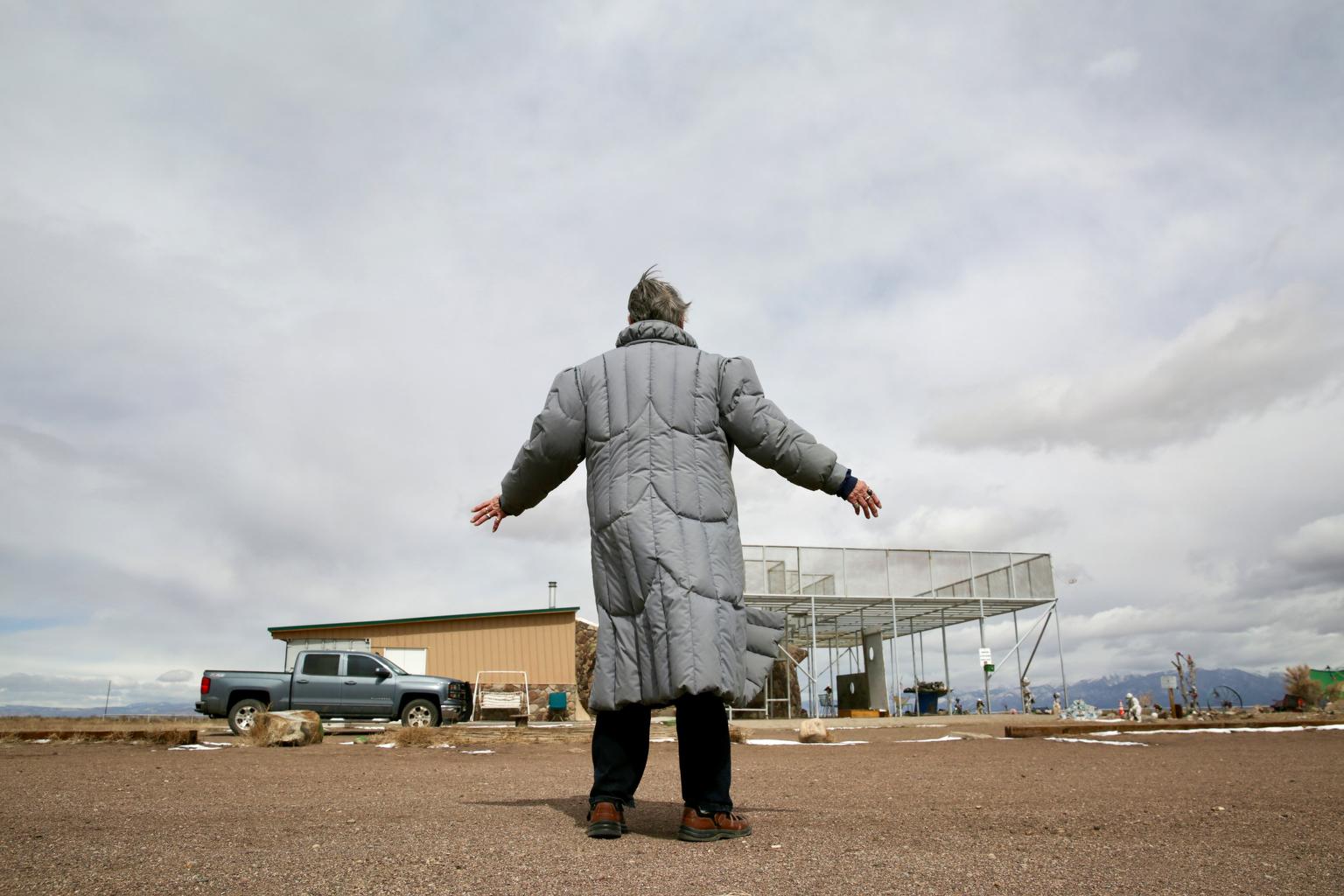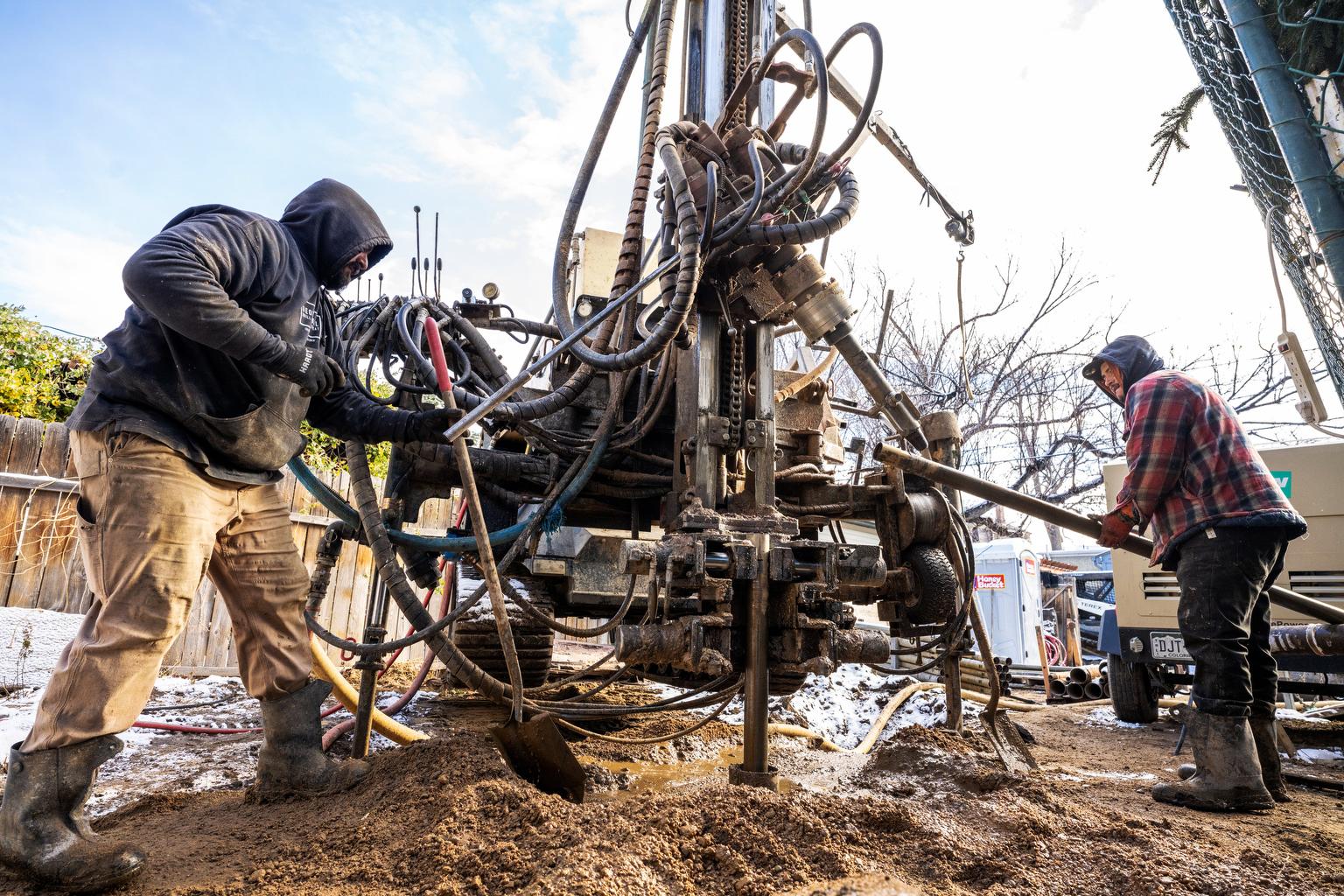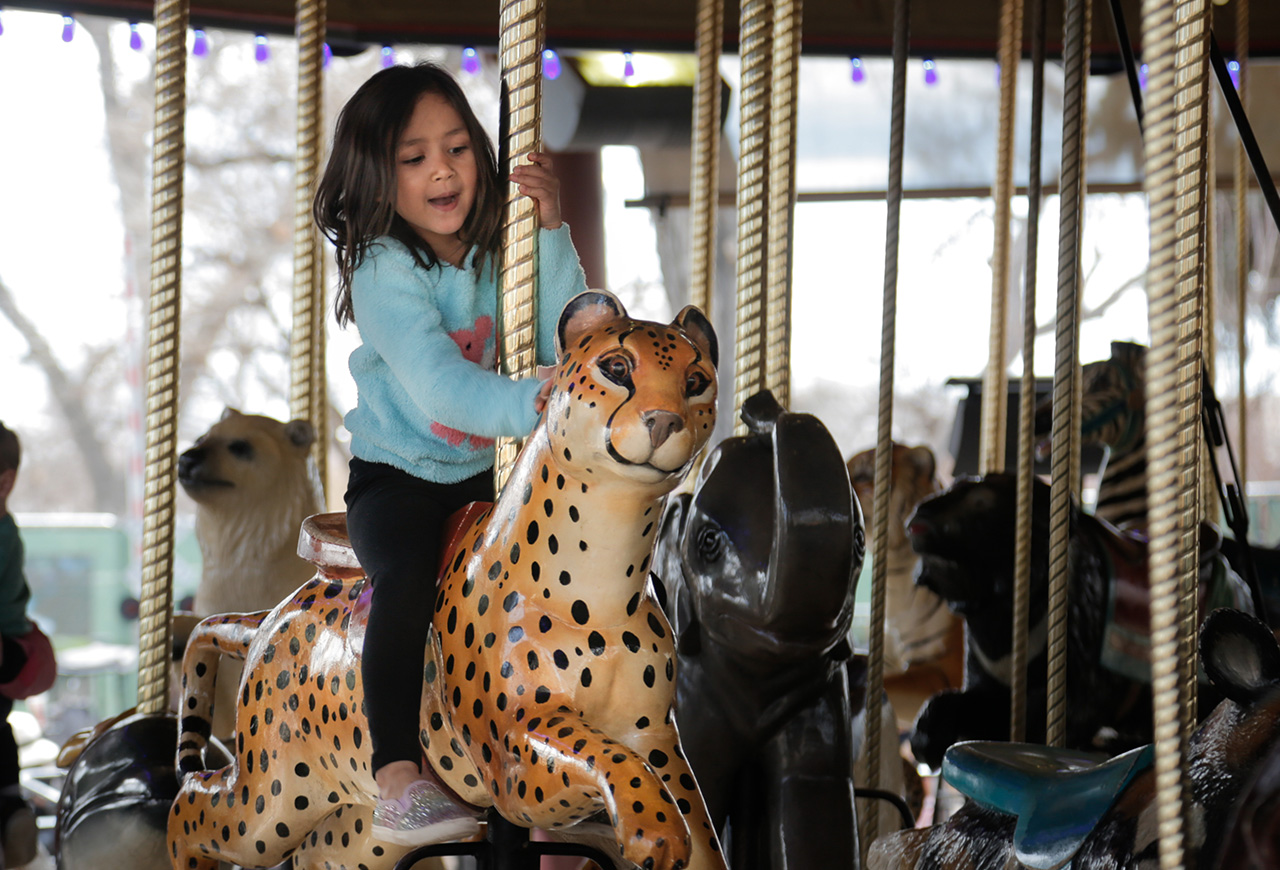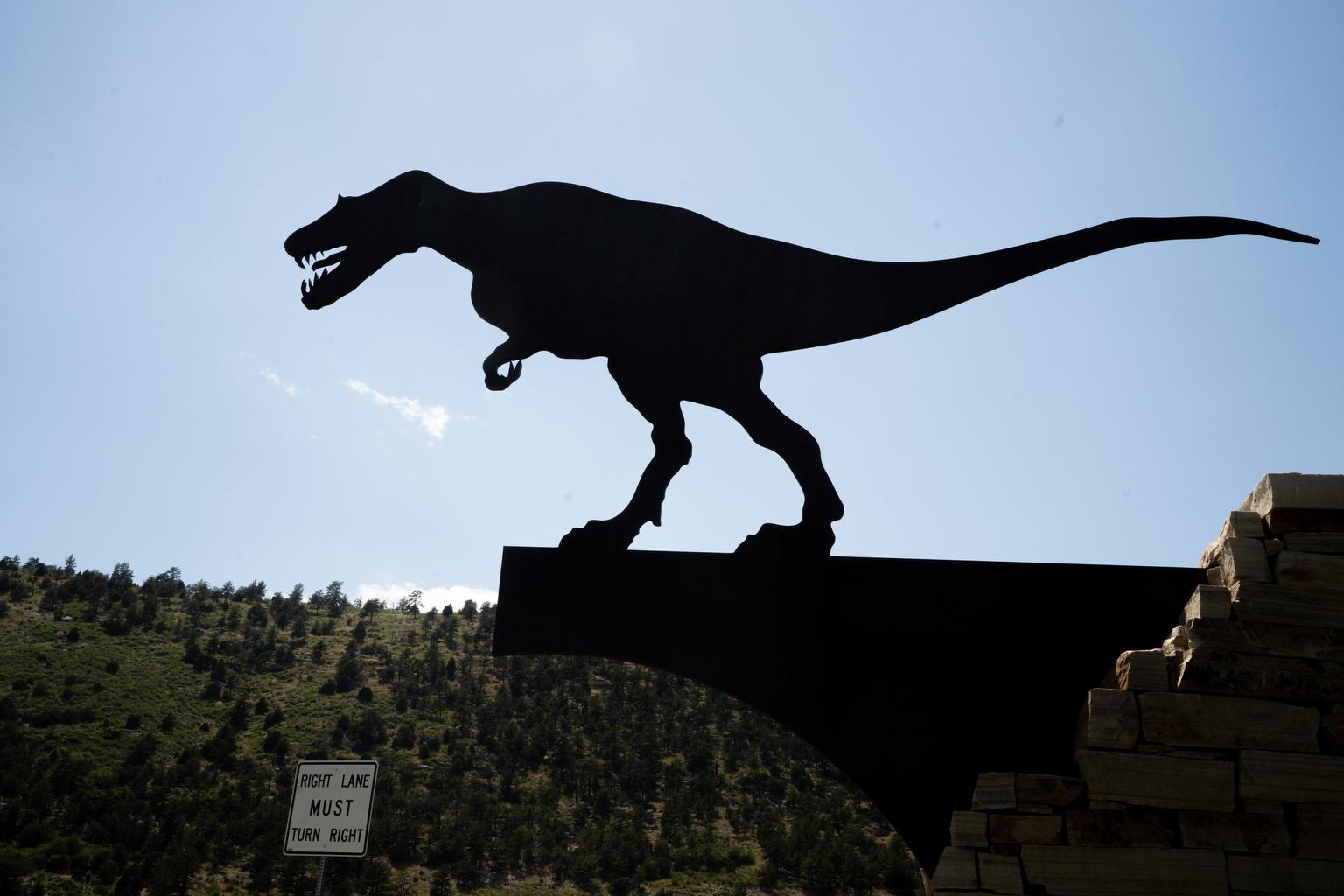
One of Colorado’s most famous prehistoric landmarks is slowly wearing away, and caretakers are struggling to figure out how to save it.
Preserved dinosaur discoveries have been traced to the area known as Dinosaur Ridge since the mid-1800s. It was there that in 1876, paleontologists discovered the remains of several dinosaur species, including the first-known skeletons of stegosaurus, the state fossil and one of the most iconic of all dinosaurs.
Six decades later, workers constructing roads to Red Rocks Park in Morrison during the late 1930s discovered hundreds of footprints from different dinosaur species that roamed what is now Colorado. The prints date back to the Jurassic period, roughly 150 million years ago.
These days, Dinosaur Ridge is commonly regarded by dinosaur enthusiasts as one of the best in-situ fossilized tracksites in the world, both for casual viewing and research purposes.
Tony Bundschu first visited Dinosaur Ridge 30 years ago. Now, he visits two or three times a year. Even on one of the hottest days of the year in June, he took his sister and brother-in-law to hike up to the tracksite.
“Where else can you go to see dinosaur footprints everywhere?” Bundschu said. “I just think it's cool if you're into dinosaurs, and I have been since I was a little kid. I think it's enchanting to go see where they were stomping around.”
The land itself is owned by Jefferson County, but it is managed on a day-to-day basis by Friends of Dinosaur Ridge, a nonprofit that also operates the site’s visitor center.
Decades-old photos of the ridge show a giant, exposed slab on the side of the Dakota Hogback plastered with over 300 different dinosaur tracks from dozens of species. The footprints have been dusted with charcoal dust over the years to make them more visible. But as time has passed, the landscape has changed.
Today, the ridge is marred with deep fractures that have persistent weeds sprouting from them.
As Jeff Lamontagne, executive director of Friends of Dinosaur Ridge, points out, some of the fossilized tracks that existed just a few years ago have faded, or worse, completely disappeared.
“We are losing dinosaur tracks here almost every year, and by our estimates more than an average of one per year,” Lamontagne told CPR News. “It's not just a little bit of qualitative degradation over time, we have different forces here that lead to the actual loss and not to return of some of these dinosaur tracks that you can see.”
Dinosaur Ridge is losing tracks due to a variety of factors
Dinosaur fossils in museums are often protected by glass enclosures with temperature and humidity controls. But Dinosaur Ridge is an uncovered rock constantly exposed to Colorado’s elements. Amy Atwater, director of development and membership at Friends of Dinosaur Ridge, said that is among the main causes of track degradation and loss, in addition to natural erosion.
“A major one of those is going to be underwater seepage,” Atwater said. “We also have [freezing] and [thawing] here in Colorado. It gets cold and what does water do when it gets cold? It expands with that ice. So that can cause a lot of these cracks and other microscopic cracks that we can't even see to be getting worse and breaking apart.”
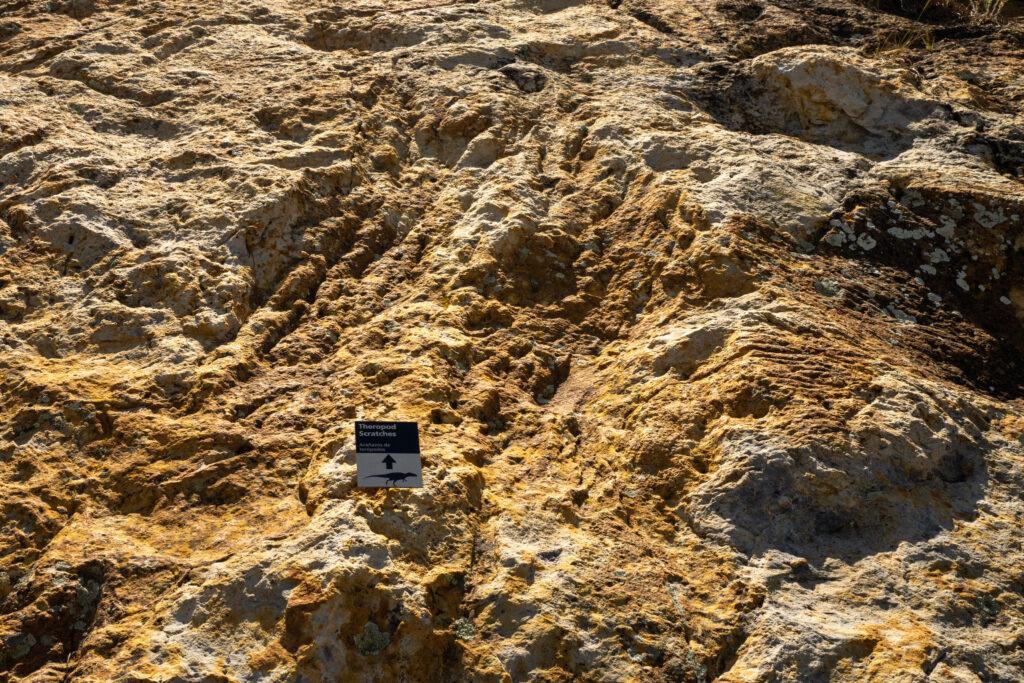
Over the years, Friends of Dinosaur Ridge have tried to install features to better protect the tracksite, the most significant one being a water diversion wall at the top of the ridge. The wall is meant to send rainwater and snowmelt away from the tracksite. But Lamontagne said the wall was built over two decades ago and is starting to deteriorate.
“It is now old and failing, at least to some extent,” Lamontagne said. “The county has taken the lead in studying the condition of that wall and trying to determine what to do next with it because ultimately moving the water away from this tracksite is critical for track protection here.”
Emails from 2022 show Friends of Dinosaur Ridge wanted to accelerate plans to build a cover for the fossilized tracks
All of Dinosaur Ridge’s stakeholders agree — the historic site is in need of some sort of protection. But there isn’t a general consensus among them on how to best proceed.
Lamontagne and Friends of Dinosaur Ridge argue there needs to be some kind of cover that shields the tracksite from the elements. A tracksite cover has been Friends of Dinosaur Ridge's longtime preference, dating back to 2008 before Lamontagne had even started there.
“There's lots of different visions of what that might look like that was able to reduce freeze-thaw through temperature control and limiting precipitation that was on the slope,” Lamontagne said. “We believe [a cover] would go a long way towards minimizing track degradation and loss.”
Atwater said other major paleontological sites across the nation have utilized some kind of tracksite covers. Dinosaur National Monument in Utah, a steep ridge covered in tracks and fossils, is enclosed completely by a building that visitors enter to see the attraction. But many others, including the Gold Hill Dinosaur Tracksite in Ouray and the Picketwire Canyonlands south of La Junta, don’t have such protections.
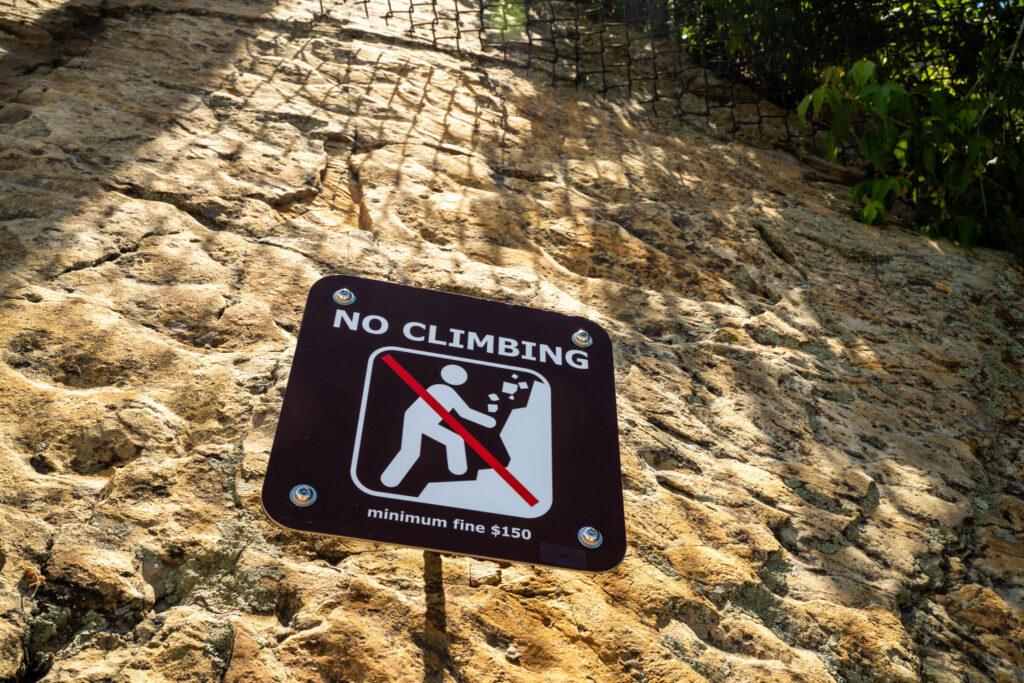
Emails and letters obtained by CPR News show that Friends of Dinosaur Ridge wanted to kickstart a fundraising campaign in 2022 to raise money for such a cover. However, that was met with pushback from several stakeholders, including Jefferson County Open Spaces, the Colorado State Historical Preservation Office, and the Jefferson County Historical Commission.
“We have reviewed the various studies, reports and recommendations on the main tracksite cover that are summarized in the attached document,” director of Jefferson County Open Spaces Tom Hoby wrote to Lamontagne in an email in January 2022. “Based on all this information, we do not believe that the proposed cover will address the current threats and could instead introduce new risks to this significant resource.”
Correspondence between opponents of a tracksite cover said the county’s analysis doesn’t account for possible issues in the future. They include potential damage to the foundation of the tracksite caused by construction, seismic activity and landslides.
Because Jefferson County owns the land, Friends of Dinosaur Ridge must obtain approval and permits from the county before it can modify the site. The State Historical Preservation Office must also sign off on any major developments as it holds an official interest in it, too.
Lamontagne said even though the county and state shot down plans to begin fundraising in 2022, he and his colleagues still feel a tracksite cover is the best option.
“I've been in conversation and in contact with people around the country, around the world, many people in our own organization who have advocated for this,” he said.
Dinosaur Ridge stands out as a free day trip option as the costs and competition to access other Colorado landmarks continue to tick upward.
While Dinosaur Ridge’s visitor numbers don’t reach the heights of Colorado’s heaviest hitters, such as Rocky Mountain National Park or the Denver Art Museum, its caretakers report about 250,000 visitors per year. The site is completely free, which appeals to many families and students on field trips.
Bundschu said Dinosaur Ridge has added more protection to the tracksite since he first visited 30 years ago — back then, he said, people could crawl up the ridge. And while he’s thankful for what caretakers have done with the site since then, he was far more impressed by the protective shelter he saw around Dinosaur National Monument.
He’d like to see Dinosaur Ridge take a similar approach to protect the tracksite — but only if it doesn’t impede on the experience.
“If it wasn't clear enough and you couldn't see [the tracks] and it was an obstruction to the view, then that would be disappointing,” he said.
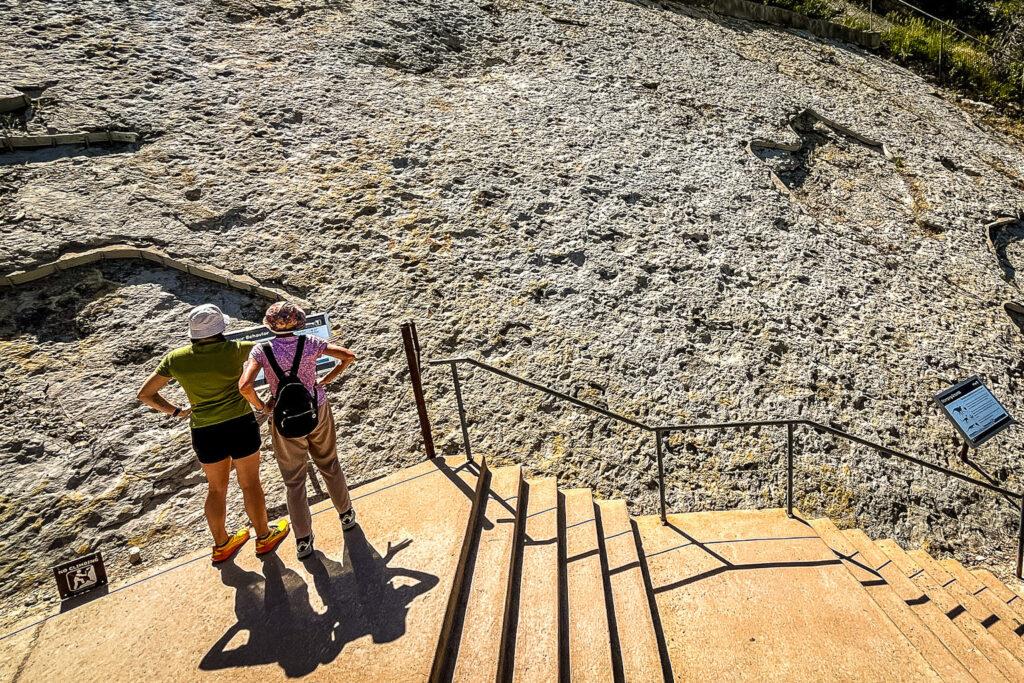
Nat Wyler was visiting Dinosaur Ridge from New Mexico in June and saw it for the first time in her life. She said she doesn’t have a basis for what other tracksites might have done, but she wasn’t very surprised to hear about the tracks’ degradation.
“I can imagine that there's some things that they could do about it, but at the same time, surely [dinosaur tracks have] lasted for a long time in other places,” she said.
Stakeholders aren’t diametrically opposed to a tracksite cover — they just want to take time to find the best option for the ridge
Following its denial of the 2022 fundraising request, Jefferson County formed a working group with Friends of Dinosaur Ridge to explore protective options. Proposals included limiting vehicle access to the ridge, creating 3D models of the ridge and authorizing studies to better understand the long-term future of the tracksite. Photogrammetry work, geotechnical engineering analysis and light-ranging studies were all on the table. But none of those ideas would be a permanent solution to the ongoing erosion.
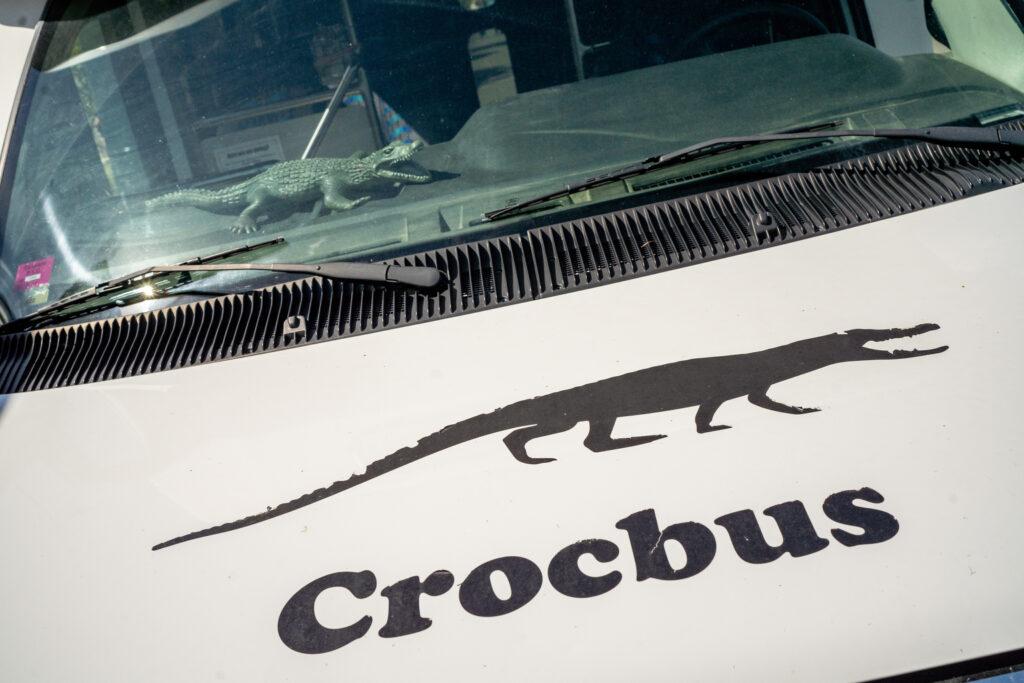
Mary Ann Bonnell, a Jefferson County park ranger and volunteer liaison between the county and Friends of Dinosaur Ridge, acknowledged the county is concerned about disappearing and degrading tracks. However, it doesn’t want to jump head-first into a solution that could be more damaging in the long run, like the water diversion wall, which has added new problems to the equation.
“We would rather take the time to do the monitoring and do the research than do something heavy-handed that will cause more harm than good,” Bonnell said.
Holly Norton, the Colorado State Archaeologist and Deputy State Historic Preservation Officer, said taking time to decide the long-term future of the tracksite may be frustrating, but it is extremely necessary.
She said bypassing the process in the past has led to missteps at Dinosaur Ridge, including the water diversion wall installed at the top of the tracksite over two decades ago. Norton said at the time, the state and Jefferson County did not pay much attention to how Friends of Dinosaur Ridge managed the land. The wall is now deteriorating and likely wasn’t installed properly, causing water to seep into the layers beneath the surface.
“Now we're kind of between a rock and a hard place because even though we know that it might be causing damage, removing that wall might also cause more damage,” Norton said. “And so now we have to take even more steps to try to figure out how to mitigate that decision. If things had waited, if it had gone through the proper channels, if we had done the proper studies, maybe we wouldn't have made that decision, or maybe it would've been made in a different way that was more beneficial to the tracksite.”
A third-party assessment ordered by Jefferson County looking into the wall found a number of flaws with the design of the wall and included multiple recommendations for how to improve it, including complete removal and replacement of the wall.
One thing is certain: the only way to preserve Dinosaur Ridge is through buy-in from all of its stakeholders
These days, the state holds a greater interest in the tracksite’s rare paleontological resources and thus watches it with a closer eye. Bonnell said the state’s reminders to adhere to Colorado regulatory requirements for paleontological sites have progressed from “gentle nudges” to “a more intense nudge” over time.
Under state and federal law, historic properties must consult several parties, including tribal representatives, to discuss how to avoid, minimize and mitigate effects on said properties.
Lamontagne agreed that state oversight has intensified. Recently, the state ordered Friends of Dinosaur Ridge to stop several longstanding practices at the tracksite, including dusting the tracks with charcoal to add contrast. It also instructed caretakers to stop stepping on the ridge, even to remove the weeds sprouting from the cracks. Several months have passed since that order came down.
“We haven’t been able to touch those weeds still,” he said. “It’s July and the state has continued to put up more barriers and let perfect be the enemy of good.”

Friends of Dinosaur Ridge, Jefferson County and the state all hesitated to put a timeline on when a more permanent solution to Dinosaur Ridge’s problems could come together, if it will at all. For Atwater and Lamontagne, that uncertainty is stressful.
“Time is of the essence. We are losing fossils every single year. They're irreplaceable. They're one of a kind. They're unparalleled anywhere else in the world. Once it's gone, it is gone forever,” Atwater said.
Still, Lamontagne stated his willingness to continue exploring long-term options with the county and state.
“Let's put our heads together and it's going to take some years, but let's do our best,” he said.
Norton sees it this way: A handful of tracks are being lost annually due to natural erosion, but if the site’s managers are not careful, all of them could be lost due to mankind’s impatience.
“Usually in my world when there's an urgency or there is a direct impact that is significantly affecting a site, we're talking about losing a site in a matter of days or weeks or months, and that's not what's occurring out at Dinosaur Ridge,” she said. “What we have seen in not even that recent of the past is that there's this sense of urgency that something needs to be done, but it happens without having the proper information or the proper data and those decisions that doing something in the end can be causing even more harm than taking a moment to get a complete study, to have experts weigh in and to make a more informed decision.”

